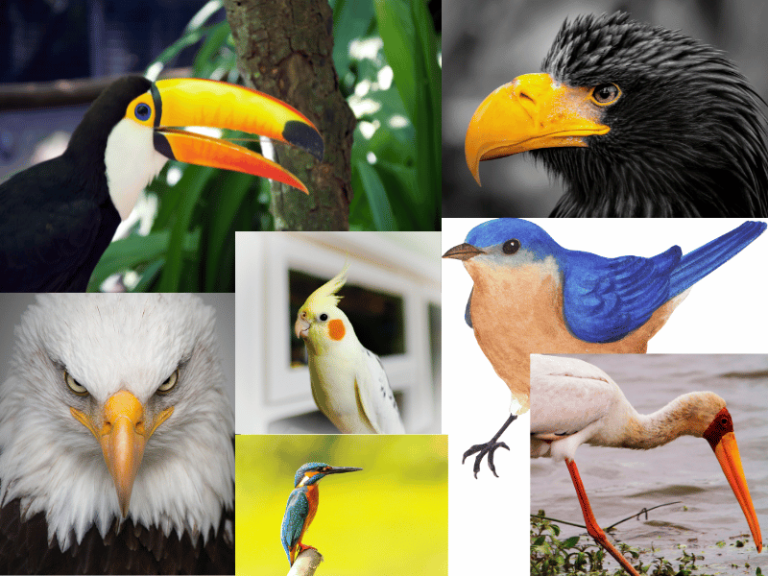The shapes of bird beaks vary greatly, just like those of other animals, and may appear strange and difficult to understand. However, in reality, the shape of any bird’s beak is closely adapted to its feeding habits, which are the result of long-term evolution in seeking food!
For example, the long and large beak of the crane is especially powerful for foraging in shallow water and grasping slippery fish and shrimp. The particularly thick upper beak of the parrot, resembling a split cow horn, is highly advantageous for crushing dried fruits. The specialized crossed beaks of crossbills are ideal for extracting pine nuts from pine cones. The cormorant’s large pouch-like lower beak is a great container for catching large fish. If they were to abandon these unique beak shapes, the individual birds’ lives would be hard to imagine.
The beaks of insect-eating birds are generally thin and pointed, like needles, suitable for eating small insects. For example, pigeons and warblers are particularly active and love to eat freshly hatched larvae or small larvae hidden in fruit or leaf axils. Their daily intake is very large, often exceeding their body weight in insects and larvae, making a significant contribution to vegetable gardens and orchards, and they can be considered the vanguard in eliminating pests.
Birds like thrushes, wagtails, and shrikes have long and pointed beaks, with the tips of their upper beaks slightly curved downward, enabling them to probe for insects in tree bark and soil. The shrike, about the same size as the thrush, has even sturdier beaks, with the tips of their upper beaks curved downward for tearing animal flesh. Shrikes are beneficial birds. They have even larger daily food intake; they not only consume large beetles and caterpillars but also lizards and small rodents.
Then there are some large carnivorous birds, such as eagles and owls, whose beaks are even more powerful than shrikes’, with sharper hooks at the tips. They mainly prey on rodents and other birds; they can even tear apart the bodies of large mammals. However, their main diet consists of forest rodents, with owls (night birds) able to eliminate more than a dozen mice every day, making them excellent forest protectors.
Swallows have flat and wide beaks, forming a triangle that becomes a parallelogram when opened. When flying rapidly in the air, they catch a large number of aphids and mosquitoes floating in the air, which fall into their mouths. Therefore, swallows are skilled at eliminating high-altitude mosquitoes.
Of particular note are some small birds, such as sparrows, buntings, and finches, whose beaks are short, stout, and triangular, particularly adept at pecking at grain seeds. After mid-autumn, they often gather in groups of thousands and attack fields, causing considerable damage to grain harvests. Therefore, people call them harmful birds.
Of course, the terms “harmful birds” and “beneficial birds” are relative, not absolute. We are accustomed to calling birds whose benefits outweigh their harms “beneficial birds”; conversely, we call them “harmful birds.” For example, although sparrows consume large numbers of pests during the breeding season, their large-scale attacks on fields during grain ripening cause severe losses, so we call them harmful birds. Despite consuming our food, who would say that chickens are harmful birds?

